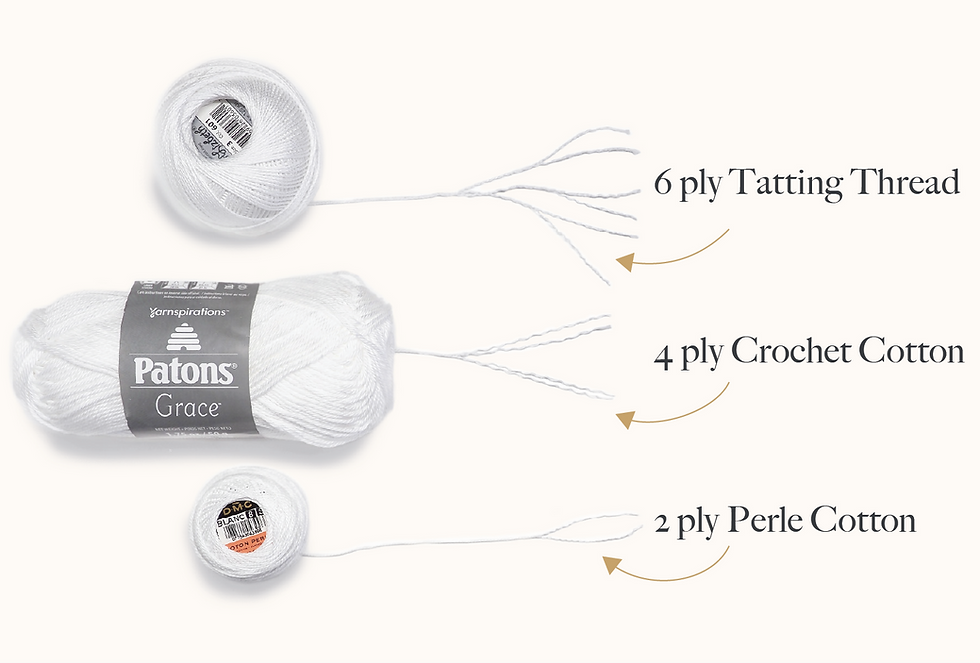What's In a Thread? Comparing Tatting Thread to Crochet Cotton.
- Sparrow Spite

- Oct 20
- 3 min read
In my book, Frivolité: The Complete Beginner's Guide to Shuttle Tatting, I talk about the importance of choosing a strong, smooth thread for learning with.
"While you can tat with any kind of thread (or yarn, or floss, or anything remotely string-like if you have enough determination!) it's best to start with a good quality tatting thread. "
Many people come to tatting from other fiber arts; crochet, knitting, embroidery, and more. And as most multi-crafters know, collecting supplies for our arts is almost a hobby in of itself. So it is completely understandable why you may be tempted to just use what you have on hand, especially if you aren't sure whether tatting is for you or not. But in my professional experience of over 15 years of teaching shuttle tatting, starting with the wrong kind of materials can be catastrophic, leading to frustration, confusion, and a strong urge to give up.
Crochet cottons are the most common substitute for tatting cotton, since they are easier to find in stores and sometimes even marketed as being suitable for tatting. While that isn't entirely untrue, they are not suitable for beginners, in my opinion. There are three major differences between crochet and tatting cottons that contribute to this issue.

Firstly, the ply, or number of individual strands that are twisted together to make a thread or yarn. Crochet cottons are most commonly a three ply yarn, meaning there are three strands of singles (a strand of fibers that are twisted together in one direction) spun together in the opposite direction that the singles are spun in. (So if a single is spun clockwise, the ply will be spun counterclockwise, locking the twists into place so it doesn't come unspun!) In comparison, tatting cotton is a six ply, consisting of three, two-ply strands spun together. This creates a much tighter twist, with less air spun in between the fibers, making the thread less "squishy." This is vital in helping maintain an even tension, something that can be difficult for beginner's to manage already without adding extra frustrations. Having a tighter twist also means there is less stretch to the thread. Stretchier yarns again make tension difficult. Tatting cottons are also much stronger because of this triple twist, so you are less likely to tear the thread due to the amount of force needed to close rings properly. Tatting cottons also go through a process called "mercerisation," a chemical process that strengthens fibers, and are also gas-singed, meaning they're run through a very hot flame very quickly as a finishing step in the process. Both of these processes contribute to smoothing out the surface of the thread, burning away tiny little stray fibers that can cause yarns to be "sticky" or "grabby," reducing the amount of friction created when sliding the knots along the core threads. This also makes the stitches more defined, which is critical in being able to read your work, see mistakes, and properly count stitches in a pattern. And finally, perhaps most importantly, buying a thread specifically marketed for tatting tells industry manufacturers that there is still a demand for this art, and that while shuttle tatting may be considered a lost art, it is nowhere near dead!
*No AI was used in the writing of this article. This site owner pledges to stand against harmful generative AI practices, such as theft of intellectual property, theft of wages owed to real artists, and the devastating environmental impacts. Generative AI will never be used in any content produced or promoted by learnshuttletatting.com, whether on our website or social media pages.



Comments